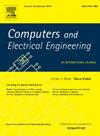基于双深 Q 网络和多区域互联电力系统置信上限算法的负载频率控制策略
IF 4
3区 计算机科学
Q1 COMPUTER SCIENCE, HARDWARE & ARCHITECTURE
引用次数: 0
摘要
为了解决传统自动发电控制(AGC)策略对异质能源导致的负荷扰动问题的适应性有限的问题,基于强化学习(RL)的发电控制策略已被广泛研究。为了提高基于 RL 的策略在负荷频率控制(LFC)中的控制精度,设计了一种基于双深度 Q 网络与置信上限(DDQN-UCB)相结合的策略,以解决非线性环境中的代理决策问题。首先,在设计 RL 奖励函数时考虑了 LFC 电力系统的区域控制误差(ACE)和控制性能标准 1(CPS1)。其次,利用 Q 网络和目标 Q 网络结合奖励值计算实际 Q 值和估计 Q 值。第三,计算两个 Q 值的偏差损失,并使用梯度下降法根据损失值更新网络。最后,引入 UCB 算法,在随机探索行动的过程中均衡每个行动的被选频率,代理使用贪婪算法结合 UCB 算法选择一个功率补偿控制行动发送给环境。本文使用 IEEE 多区域 LFC 电力系统作为实验验证模型。将所提出的 RL 控制算法与其他五种算法进行比较后发现,预学习收敛精度提高了 57.5%。此外,LFC 效果测试表明,DDQN-UCB 控制策略在提高 LFC 精度的同时,还能将区域间连接线的功率交换稳定在 1.8972 MW 以内,从而保持了电力系统的稳定性。本文章由计算机程序翻译,如有差异,请以英文原文为准。
A load frequency control strategy based on double deep Q-network and upper confidence bound algorithm of multi-area interconnected power systems
The reinforcement learning (RL)-based generation control strategies have been widely studied to address the limited adaptability of traditional automatic generation control (AGC) strategies to the load disturbance problem resulting from heterogeneous energy sources. To improve the control accuracy of the RL-based strategy in load frequency control (LFC), a double deep Q-network combined with an upper confidence bound (DDQN-UCB)-based strategy is designed to solve the problem of agent decision-making in a nonlinear environment. Firstly, the area control error (ACE) and control performance standard 1 (CPS1) of the LFC power system are considered in the design of the RL reward function. Secondly, the actual and estimated Q-values are calculated using the Q-network and the target Q-network combined with the reward value. Thirdly, the deviation loss of the two Q-values is calculated, and the network is updated based on the loss value using gradient descent. Finally, the UCB algorithm is introduced to equalize the frequency of being selected for each action during the random exploration of the actions, and the agent uses the greedy algorithm in combination with the UCB algorithm to select a power-compensated control action to send to the environment. In this paper, the IEEE multi-area LFC power system is used as an experimental validation model. A comparison of the proposed RL control algorithm with five other algorithms revealed that the pre-learning convergence accuracy was improved by 57.5%. Furthermore, the LFC effectiveness test demonstrated that the DDQN-UCB control strategy enhances LFC accuracy while simultaneously stabilizing the power exchange of the inter-area tie-line to within 1.8972 MW, thereby maintaining the stability of the power system.
求助全文
通过发布文献求助,成功后即可免费获取论文全文。
去求助
来源期刊

Computers & Electrical Engineering
工程技术-工程:电子与电气
CiteScore
9.20
自引率
7.00%
发文量
661
审稿时长
47 days
期刊介绍:
The impact of computers has nowhere been more revolutionary than in electrical engineering. The design, analysis, and operation of electrical and electronic systems are now dominated by computers, a transformation that has been motivated by the natural ease of interface between computers and electrical systems, and the promise of spectacular improvements in speed and efficiency.
Published since 1973, Computers & Electrical Engineering provides rapid publication of topical research into the integration of computer technology and computational techniques with electrical and electronic systems. The journal publishes papers featuring novel implementations of computers and computational techniques in areas like signal and image processing, high-performance computing, parallel processing, and communications. Special attention will be paid to papers describing innovative architectures, algorithms, and software tools.
 求助内容:
求助内容: 应助结果提醒方式:
应助结果提醒方式:


